I couldn’t resist going back to visit the fascinating carvings in the Seething Lane Garden that I wrote about last week. They all relate to the life of Samuel Pepys and have revealed a few things that I did not know.
I was puzzled by this carving of a monkey who is sitting on some books and appears to have taken a bite out of a rolled up document …
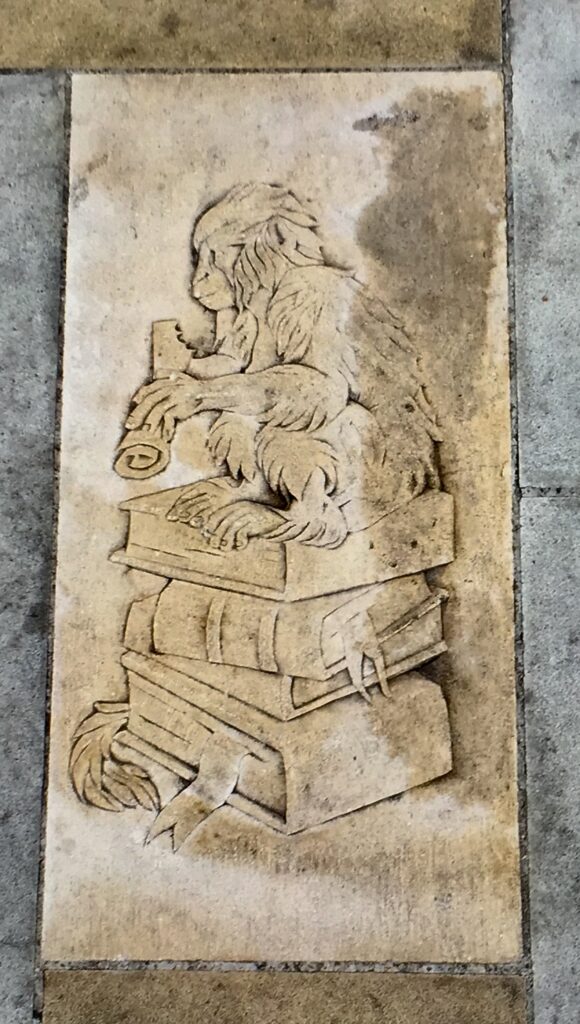
Then I found the following entry in Pepys’s diary for Friday 18th January 1661 …
I took horse and guide for London; and through some rain, and a great wind in my face, I got to London at eleven o’clock. At home found all well, but the monkey loose, which did anger me, and so I did strike her till she was almost dead …
I’m not sure whether it was his pet or his wife’s, but it certainly paid a heavy price for its misbehaviour.
He also got upset with his wife’s pet dog. On 16th February 1660 he wrote …
So to bed, where my wife and I had some high words upon my telling her that I would fling the dog which her brother gave her out at the window if he pissed in the house any more.
On 11th January 1660 he visited the Tower of London menagerie and ‘went in to see Crowly, who was now grown a very great lion and very tame’. And here he is …
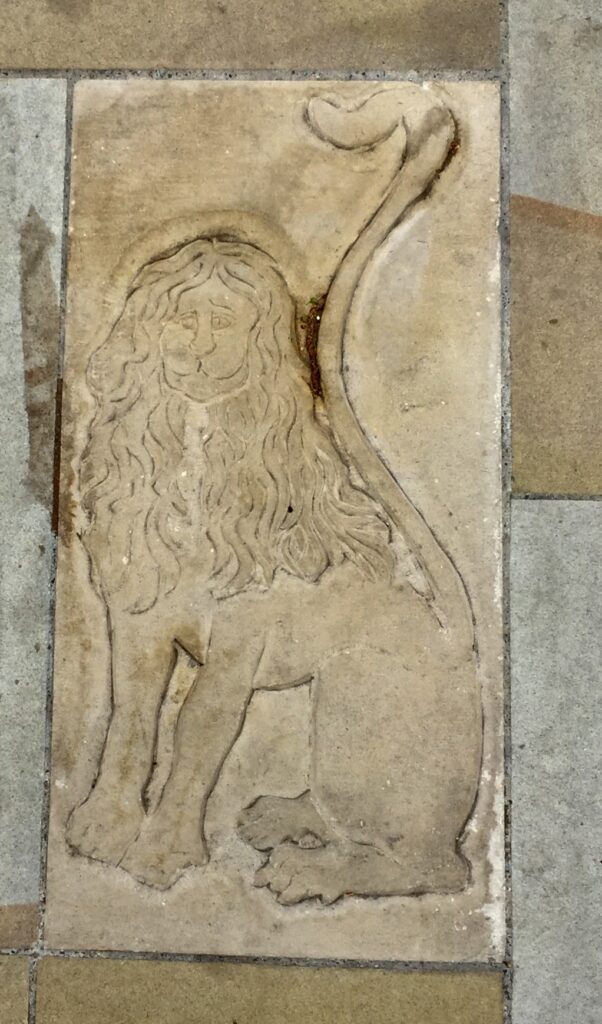
Amazingly, Pepys once owned a pet lion himself.
As the Navy’s principal administrator he wielded considerable influence and was frequently sent gifts in order to curry favour. Kate Loveman, in her book Samuel Pepys and His Books: Reading, Newsgathering, and Sociability, 1660-1703 writes : ‘In Algiers the consul Samuel Martin found providing suitable presents taxing … He sent Pepys naval intelligence and (in despair) …
A Tame Lion, which is the only rarity that offers from this place …
Pepys kept the creature in his home at Derby House and sent the following gracious message to Martin, assuring him that the animal was …
… as tame as you sent him and as good company.
In 1679 tragedy struck when Pepys was arrested, dismissed from service and sent to the Tower of London on charges of ‘Piracy, Popery and Treachery’. The first two were outlandish and easily disproved but much more damaging and dangerous was the rumour that he had sold state secrets to the French (a crime which carried the terrifying penalty of being hanged, drawn and quartered).
Using his own resources and considerable network, he tracked down the story to a lying scoundrel called John Scott. Pepys was subsequently freed but was left homeless, jobless and in a perilous situation financially. In her book Samuel Pepys, The Unequalled Self, Claire Tomalin made the poignant observation that whilst in the Tower ‘he could console himself only with the sound of the familiar bells of All Hallows and St Olave’s’.
Here is the carving of Pepys in the Tower …
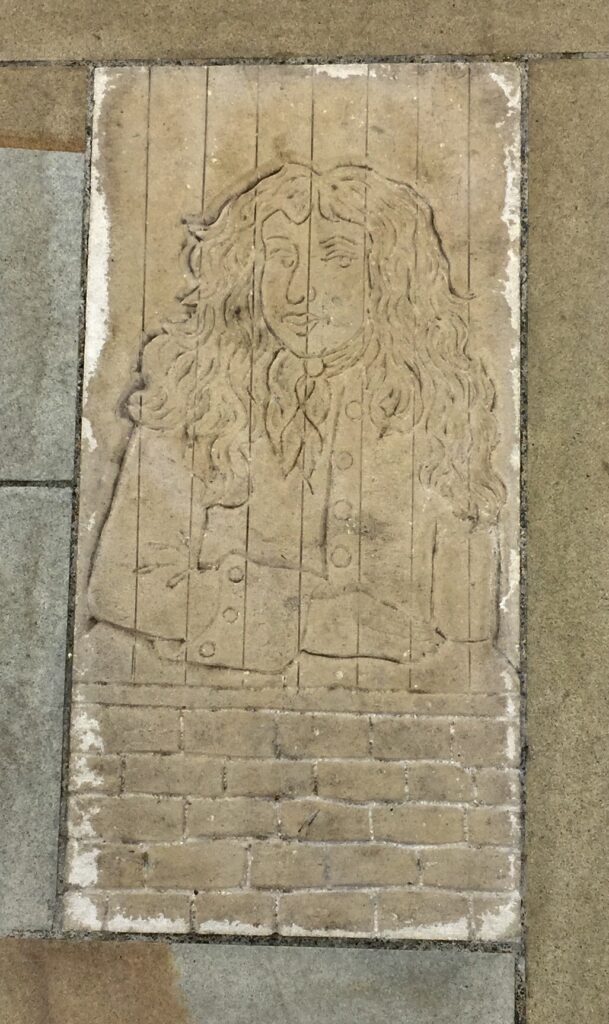
You can read the full story of his first imprisonment in The Plot against Pepys by Ben and James Long.
He was to return to office in 1686 with the full support of the new king, James II, and set up a special ‘Navy Commission’ to clear the navy’s accounts and restore the force to its 1679 levels. This was completed six months ahead of schedule and was probably his last, and arguably greatest, achievement.
Back in 1649 Pepys had skipped school and witnessed the execution of King Charles the First outside the Banqueting House in Whitehall. Here is the poor King’s head being held aloft by his executioner …
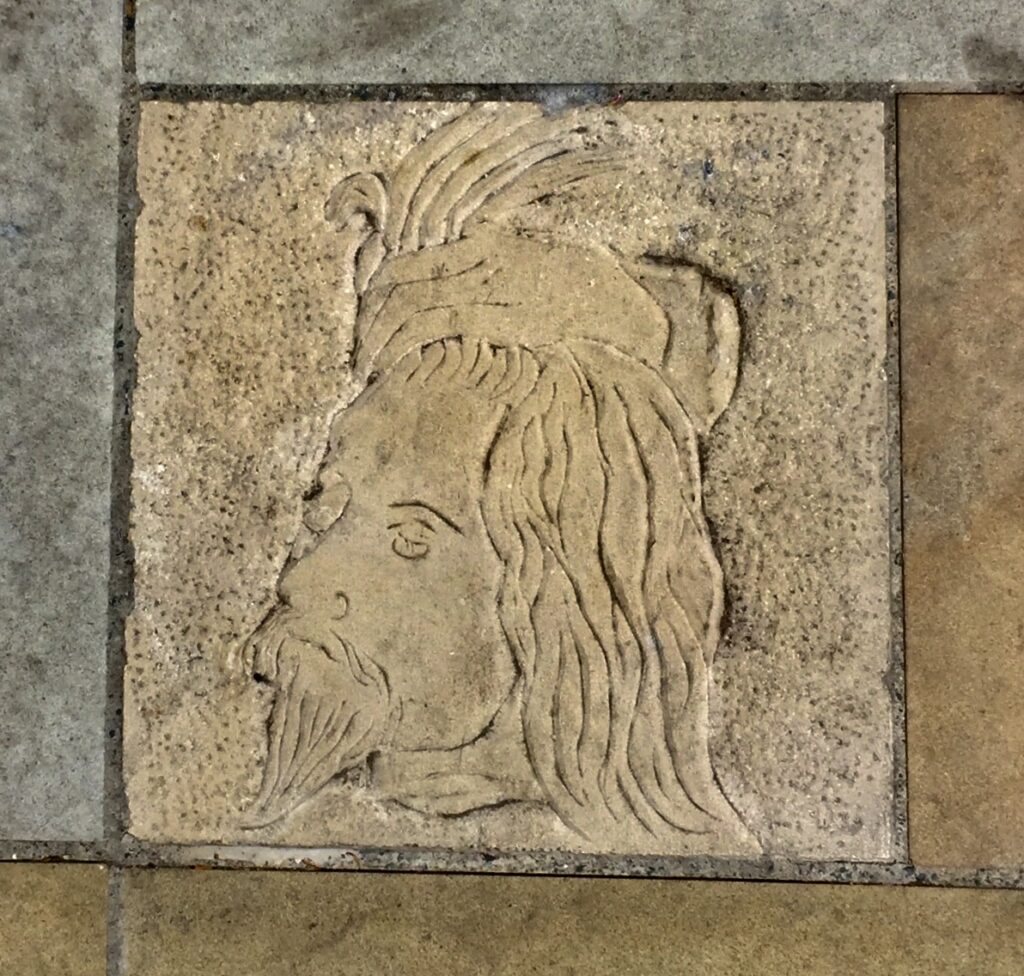
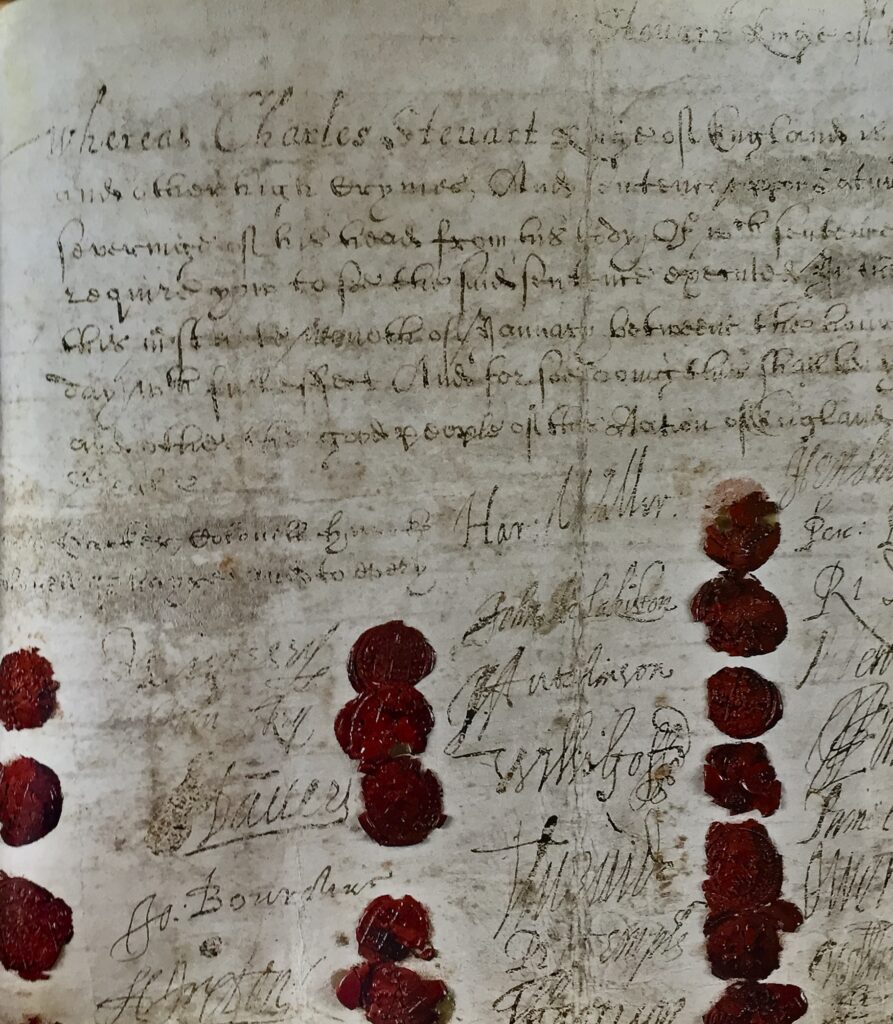
HL/PO/JO/10/1/297A.
Eleven years later, on 13th October 1660, he witnessed the execution of Major-General Thomas Harrison, one of the regicide signatories to the warrant. The punishment was hanging drawing and quartering. Pepys’s droll diary entry made me smile …
I went out to Charing Cross, to see Major-General Harrison hanged, drawn, and quartered; which was done there, he looking as cheerful as any man could do in that condition.
Pepys loved theatrical performances and represented in the garden is an early version of Punch and Judy …
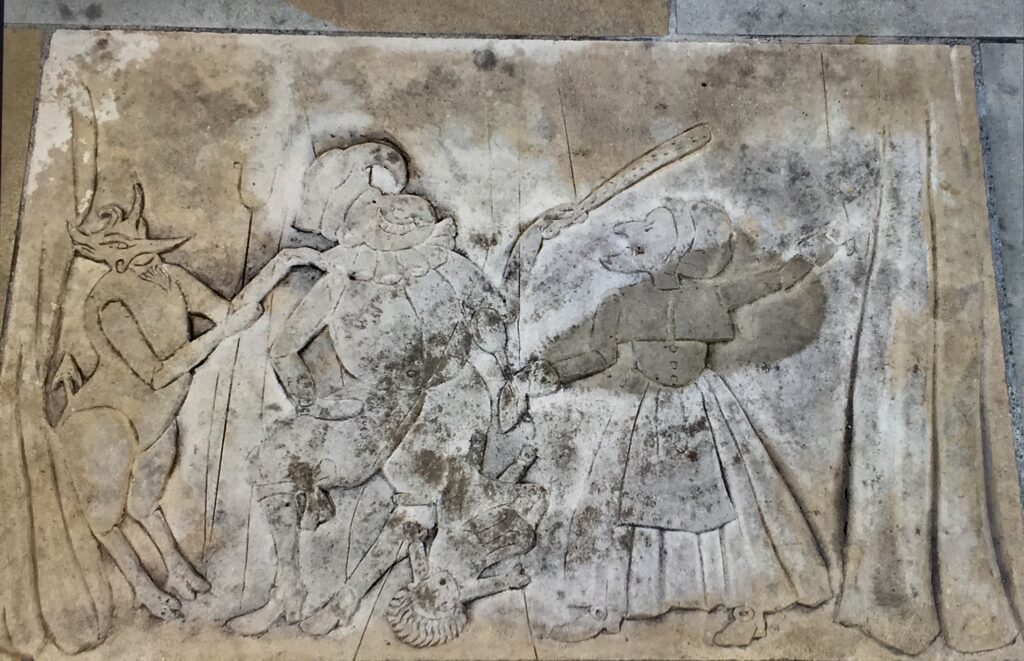
On 9th May 1662 he wrote …
Thence with Mr Salisbury, who I met there, into Covent Garden to an alehouse, to see a picture that hangs there, which is offered for 20s., and I offered fourteen – but it is worth much more money – but did not buy it, I having no mind to break my oath. Thence to see an Italian puppet play that is within the rayles there, which is very pretty, the best that ever I saw, and great resort of gallants. So to the Temple and by water home …
On 4th September 1663 he visited the notorious Bartholomew Fair in Smithfield and toured the attractions with his wife. He wrote, ‘above all there was at last represented the sea, with Neptune, Venus, mermaids, and Ayrid on a dolphin‘. The mermaid is also here in the park …
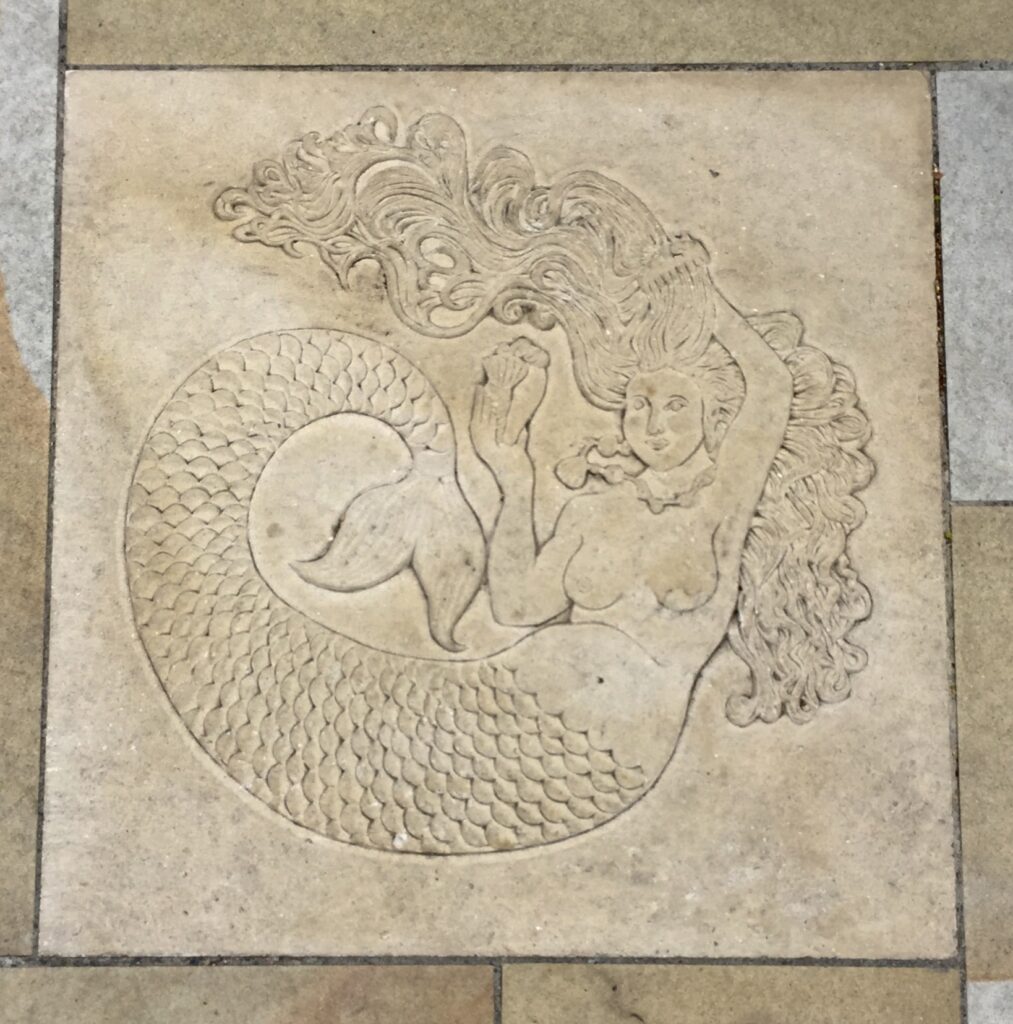
The first page of the diary in the shorthand code he had devised for it …
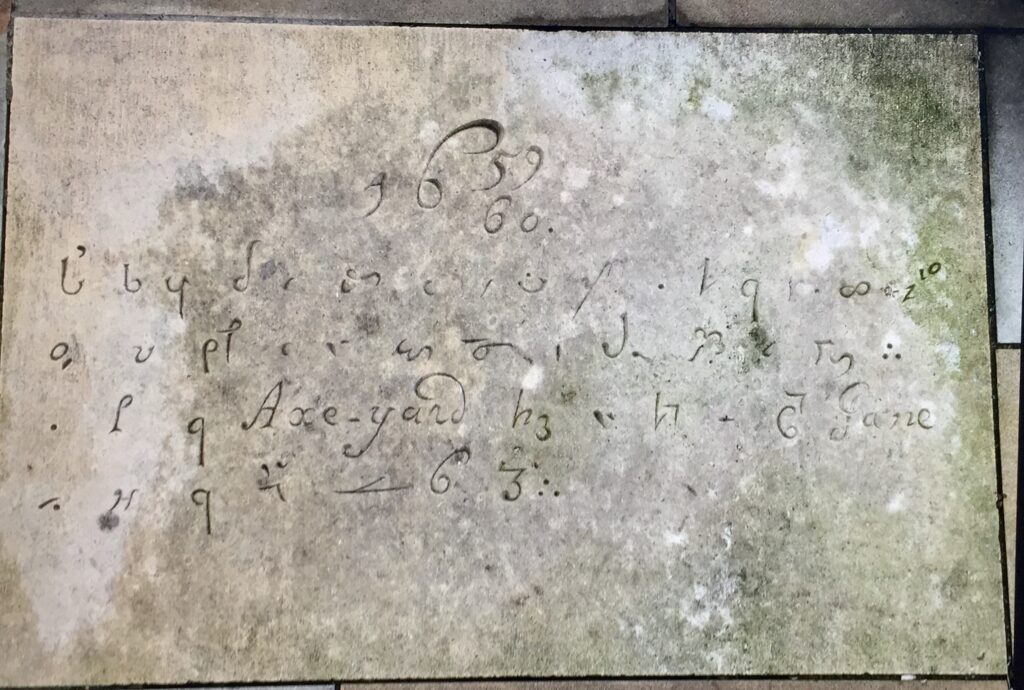
Blessed be God, at the end of last year I was in very good health, without any sense of my old pain but upon taking of cold. I live in Axe Yard, having my wife and servant Jane, and no more family than us three. My wife, after the absence of her terms for seven weeks, gave me hopes of her being with child, but on the last day of the year she hath them again.
Samuel had been a student at Magdalene College, Cambridge and bequeathed the College his vast library of over 3,000 tomes (including the six volumes of his diary). The library, which bears his name, is represented here (the Wyvern is the College crest) …
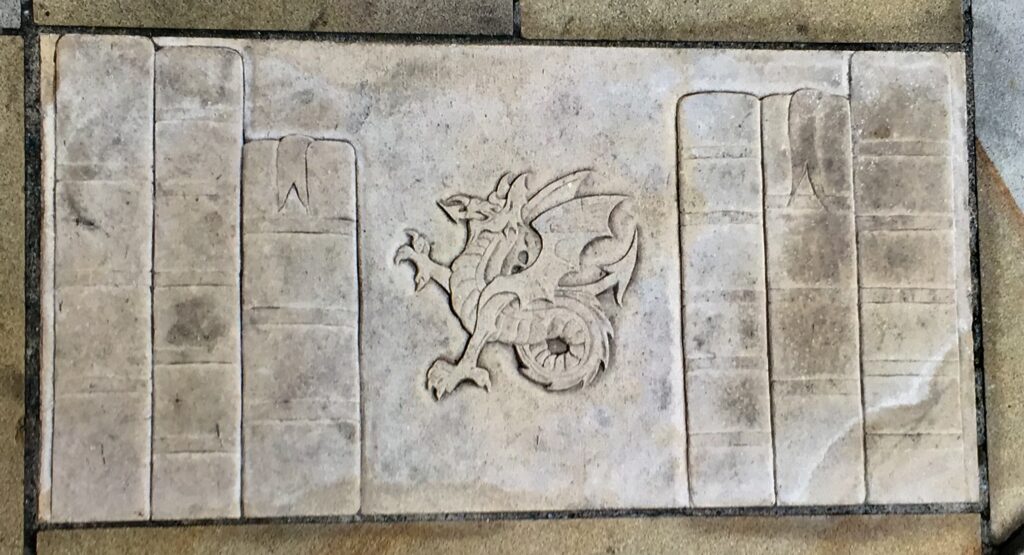

The Gentle Author, who publishes Spitalfields Life, has written an eloquent description of his visit to the library which you can read here.
I have written about Pepys before : Samuel Pepys and his ‘own church’ and Samuel Pepys and the Plague.
If you would like to follow me on Instagram here is the link …
